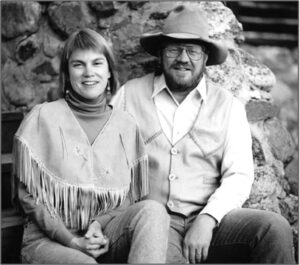
The Story of Montana’s environmental movement is chock full of plot twists and turns, dark and delightful characters, and these two star-quality protagonists: Phil Tawney and Robin Tawney Nichols.
As University of Montana students, Phil and Robin arrived in Helena to work as interns at the 1971 Montana Legislative Session. They returned two winters later, as up-and-coming activists, recruited by Don Aldrich (MOHOF 2014), the executive secretary of the Montana Wildlife Federation and the state’s lone conservation lobbyist. Calling themselves the Environmental Lobby, the trio buttonholed Montana state legislators by day and burned up the phones at night, rallying the grassroots to contact their lawmakers about pending legislation.
That experience led the Tawneys and others to create the Montana Environmental Information Center in 1973. MEIC is thought to be one of the first organizations in the state to co-opt the “environmental” handle to include year-round watchdog protection of Montana’s natural resources. As MEIC’s first staff, Phil and Robin had that rare, undefinable something that drew people to them. They could muster the hardest hearts to support environmental causes.
Between 1971 and 1975, the Tawneys were in the middle of crafting or reforming nearly every law that had anything to do with protecting land and water in Montana. Laws emerged to protect air and water quality, require mine reclamation, detail environmental standards for energy production and subdivision development, control in-stream flows, and more.
An influential state representative dubbed those years a “Renaissance in Montana” for environmental legislation, Jim Posewitz (Montana Outdoor Hall of Fame, 2016) noted in “The Hunter’s Spirit,” an eloquent tribute to Phil.
In the 1980s, now with a UM law degree, Phil played a vital role in the early success of the Rocky Mountain Elk Foundation, as its first legal counsel. His work lives on across hundreds of thousands of acres of wildlife habitat conserved by the RMEF. Not the least of which was the $1.7 million acquisition of Robb Creek Grazing Association lands— 32,000 acres adjacent to the Blacktail Wildlife Management Area in the Ruby Mountains.
In 1988, Otto Teller, a long-time organic farmer and land preservationist, expressed concerned to Phil about the fragmentation of habitat in the Bitterroot Valley. Phil worked to secure more than 1,200 acres of Teller’s Bitterroot floodplain and agriculture lands under a perpetual conservation easement. The property is now the Teller Wildlife Refuge. Meanwhile, Robin wrote magazine articles about Montana’s complex conservation issues and published her first children’s guide to Yellowstone National Park. Since Phil’s passing from leukemia in 1994, Robin has continued to write, authoring family guidebooks and a biography that includes Montana’s early environmental history.
Today the Tawney legacy endures through the work and lives of Phil and Robin’s children—Land, Mikal, and Whitney—who continue the family calling to champion Montana’s outdoor heritage.
By Tom Palmer, Montana Outdoor Hall of Fame
The Missoula Conservation Roundtable gratefully acknowledges generous contributions to our website design. Our logo was created by Kate Davis, Raptors of the Rockies; Brian Christianson contributed the photographs for page headers Brian Christianson Photography
Website created by Irestone Web Design
